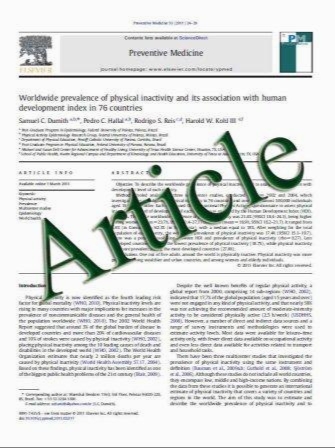Changes in the contents of enzymatic immature, mature, and non-enzymatic senescent cross-links of collagen after once-weekly treatment with human parathyroid hormone (1–34) for 18 months contribute to improvement of bone strength in ovariectomized monk
- نوع فایل : کتاب
- زبان : انگلیسی
- مؤلف : M. Saito & K. Marumo & Y. Kida & C. Ushiku & S. Kato & R. Takao-Kawabata & T. Kuroda
- چاپ و سال / کشور: 2010
Description
Summary Improvements in total content of enzymatic cross-linking, the ratio of hydroxylysine-derived enzymatic cross-links, and non-enzymatic advanced glycation end product cross-link formation from once-weekly administration of hPTH(1–34) for 18 months in OVX cynomolgus monkeys contributed to the improvement of bone strength. Introduction Parathyroid hormone (PTH) is used for the treatment of osteoporosis. To elucidate the contribution of material properties to bone strength after once-weekly treatment with hPTH(1–34) in an ovariectomized (OVX) primate model, the content of collagen and enzymatic immature, mature, and non-enzymatic cross-links, collagen maturity, trabecular architecture, and mineralization in vertebrae were simultaneously estimated. Methods Adult female cynomolgus monkeys were divided into four groups (n=18–20 each) as follows: SHAM group, OVX group, and OVX monkeys given once-weekly subcutaneous injections of hPTH(1–34) either at 1.2 or 6.0 μg/kg (low- or high-PTH groups) for 18 months. The content of collagen, enzymatic and non-enzymatic crosslinking pentosidine, collagen maturity, trabecular architecture, mineralization, and cancellous bone strength of vertebrae were analyzed. Results Low-PTH and high-hPTH treatments increased the content of enzymatic immature and mature crosslinks, bone volume (BV/TV), and trabecular thickness, and decreased pentosidine, compared with the OVX group. Stepwise logistic regression analysis revealed that BV/TV, the content of total enzymatic cross-links, and calcium content independently affected ultimate load (model R2=0.748, p<0.001) and breaking energy (model R2=0.702, p<0.001). BV/TV was the most powerful and enzymatic cross-link content was the second powerful determinant of both ultimate load and breaking energy. The most powerful determinant of stiffness was the enzymatic cross-link content (model R2=0.270, p<0.001). Conclusion Once-weekly preventive administration of hPTH(1–34) increased the total contents of immature and mature enzymatic cross-links, which contributed significantly to vertebral cancellous bone strength.
Osteoporos Int (2011) 22:2373–2383 DOI 10.1007/s00198-010-1454-4 Received: 18 August 2010 / Accepted: 24 September 2010 / Published online: 20 October 2010


